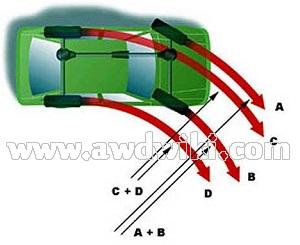
5 important things to know about all-wheel drive (AWD)
Content
All-wheel drive (AWD) systems provide power to all four wheels, not just the front or rear. While driving, most of these systems have either a front or rear base, which means the power is concentrated there unless the car starts to slip. When this happens, power is transferred to the other axle to regain traction. That's why XNUMXxXNUMXs are more popular in areas where snow and ice are common - they provide the extra traction you need to overcome those conditions. Whether you're considering a four-wheel drive vehicle or have already purchased one, there are a few things you need to know about the system to ensure the best possible user experience and vehicle performance.
Understand how four-wheel drive works
Most people believe that all-wheel drive automatically provides safer driving on snow and ice. While this is partly true, it is important to remember that this type of system improves traction after coming to a complete stop. However, this will not improve turning and stopping under these conditions. As such, you will still need to drive with care in hazardous conditions.
Tire types matter
The tires fitted to the vehicle play an important role in how well the AWD system works. If you live in an area where there is a lot of ice and snow during the winter months, you should make sure you use winter tires during the cold months. The increased flexibility will provide better traction in cold temperatures, ice, snow and slush, helping to improve overall XNUMXWD performance.
Maintain proper fluid level
Four wheel drive vehicles require lubrication in the form of fluids for the transmission, transfer case and differential. It is important that you maintain the manufacturer's recommended fluid levels and change the frequency to keep the system in good condition and ensure optimum performance.
Poor fuel economy
While all-wheel drive vehicles provide improved handling under certain conditions, there is a price to pay. These cars usually have better gas mileage than front or rear wheel drive options, so if you're looking for economy, all wheel drive might not be the best option for you.
Tire size is critical
All wheel drive vehicles are manufactured to exacting specifications. For the system to work properly, you need to follow the manufacturer's tire size recommendations, including those that require larger rear tires than front tires.
